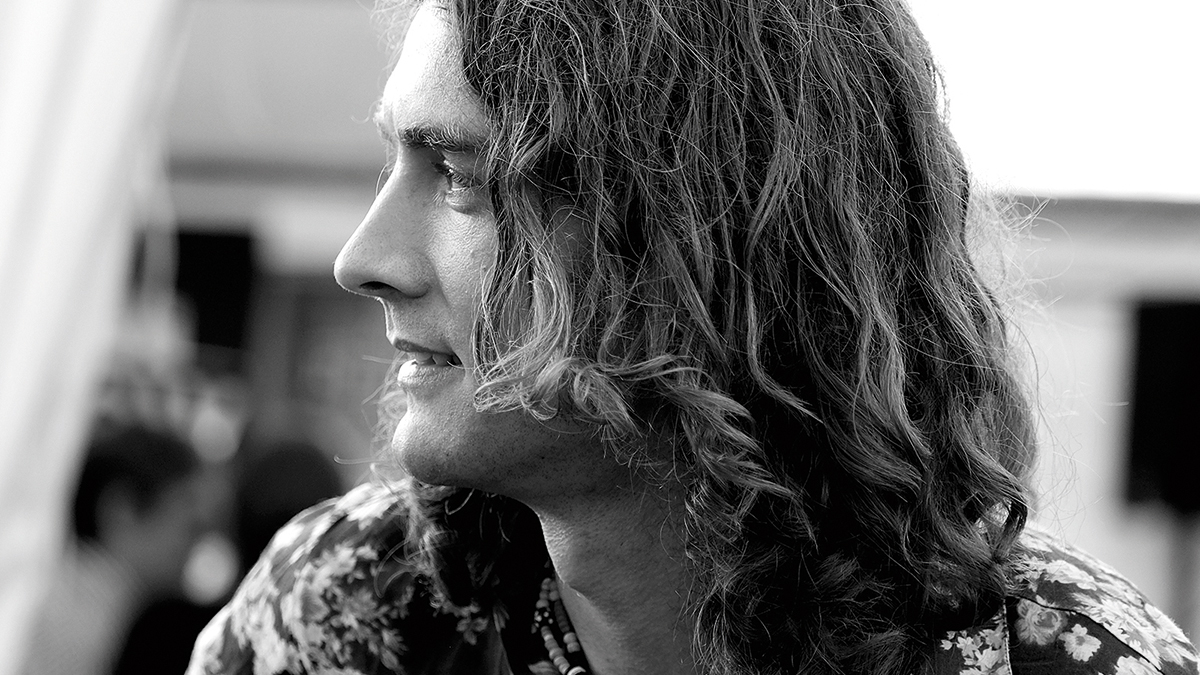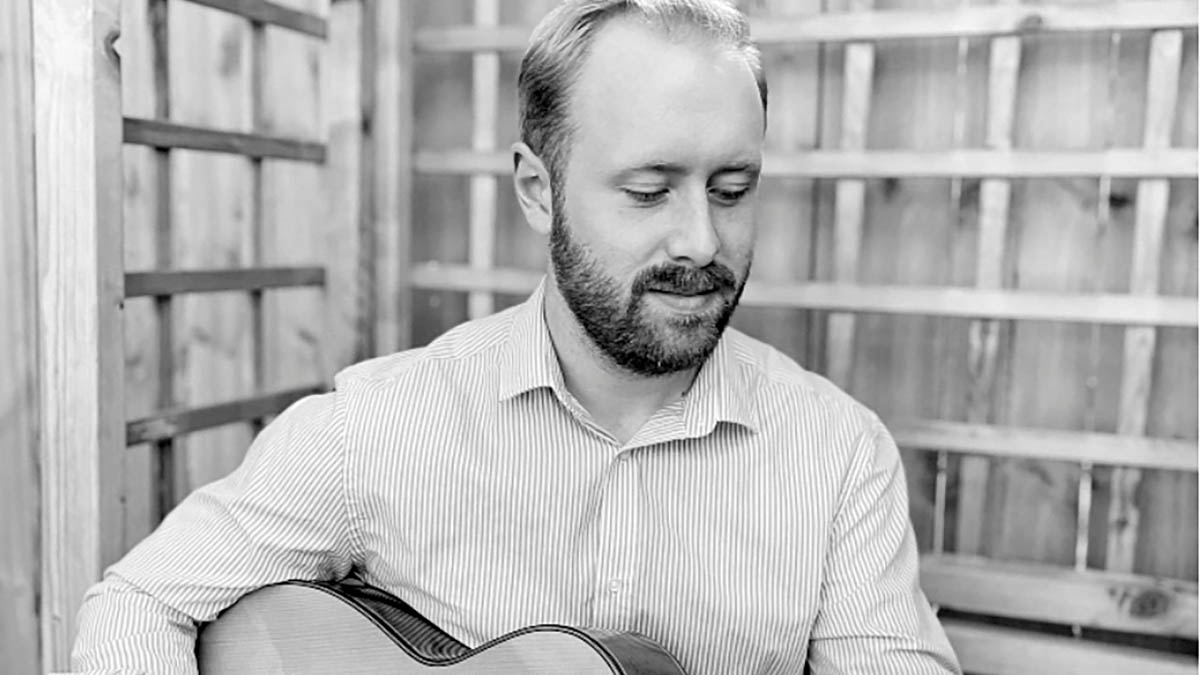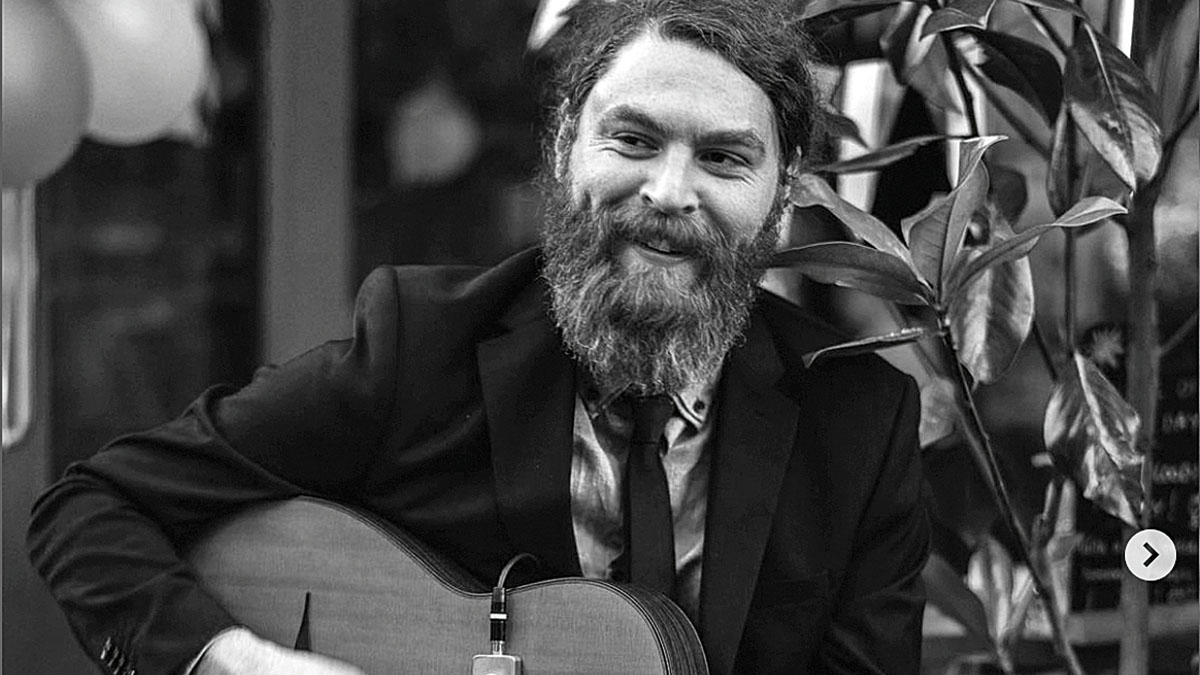Django Reinhardt's legacy: 6 guitarists on what makes his guitar playing so important, relevant and vital in the 21st century
Six modern-day Gypsy jazz disciples salute one of the greatest players of all time

The story of Django Reinhardt’s life is as well known as it is legendary. Born in Belgium in 1910 to Manouche Romani parents who wintered there each year, his gadjo (non-Romani) name was Jean, but to everyone in Romani culture he was Django. Surrounded by music from birth, Django was a quick learner, a prodigy, and was playing professionally in Le Bal-Musette by his mid-teens.
The tragic accident that almost ended his life, let alone his career, is part of guitar folklore. At the age of just 18 he had returned to his caravan after a gig where his wife had prepared a batch of cellophane flowers to sell at market the next day. Django, having knocked a candle over, was confronted by a sudden inferno and suffered terrible burns over his entire left side as he fought to rescue his wife, and himself, from the flames.
Many months rehabilitating in hospital eventually brought him back to health, but his left hand was left disfigured to the extent that the third and fourth fingers were drawn back, claw-like, into his palm. Here they remained for the rest of his life, unemployable for single lines, although he did eventually find a way to use them for doublestops when chording.
Left with just his first and second fingers for any lead lines, Django unwittingly created one of the great mysteries in guitar history. How did he do it? How was he able to play with such power, precision and speed with just two left-hand fingers? Besides, it wasn’t just overcoming the physical injury that proved Django to be a rare genius. At the beginning of the 1930s, Django had an epiphany as he discovered jazz, the music that would change the direction of his life and that of guitar history.
Django meets jazz
When Django heard trumpet titan Louis Armstrong for the first time he burst into tears saying “my brother” quietly to himself. Armstrong was the dominant force in jazz during the late 1920s and early 30s. Alongside his contemporaries he sounded as though he’d come from another planet in much the same way that Jimi Hendrix did four decades later.
Django’s almost immediate assimilation of jazz language blended beautifully with his natural Gypsy flair and created a new guitar style and musical genre that has persisted, intact, to this day. It’s an approach that Cornelius Corkery describes as “profoundly human”, going on to stress that it “cuts right through you regardless of your age”. When Corkery first heard Django as a teenager, he recalls: “I couldn’t believe a guitar could sound so happy!”

To Chris Quinn, Django’s “tone, dynamics and phrasing were mind-blowing,” he tells us. “He was a creative genius with an effortless command of his instrument. His entire approach was revolutionary.”
All the latest guitar news, interviews, lessons, reviews, deals and more, direct to your inbox!
Revolutionary it was, and it still sounds so. Django played with complete freedom, often surprising himself when hearing playbacks in the studio, listening as though he were hearing someone else.
Being at the cutting edge of something would have meant Django, like his hero Armstrong, had no reference point but his own playing. There was simply nothing else around remotely like it. As Remi Harris points out: “While many great guitarists have their own signature sound and style, Django actually pioneered an entirely new genre of music.” That music is now universally known as Gypsy jazz.

From 1934 up until the outbreak of World War II, Django, alongside violinist Stéphane Grappelli, produced a series of legendary recordings as part of the Quintette du Hot Club de France, each showcasing his phenomenal mastery of the fretboard. Blistering chromatic runs, mind-blowing arpeggios, ferocious chording and intense rhythmic drive are just some of Django’s assets that continue to perplex guitarists even today.
But there was more: a sensitivity with a melodic line, a subtle string bend and clever use of space all contributed to a sense of drama – and even romance – when Django played. “Django’s playing is completely unique,” says Harry Diplock. “In all this time there has never been another guitarist that plays like Django.”
For Alex Bishop, Django’s playing is “unbelievably melodic”. “His phrases are so song-like,” he says, “his sense of time/rhythm so smooth and flexible. He’s more like a vocalist than a guitarist at times.” Despite the fact that Django was one of jazz history’s true in-the-moment improvisors, Remi Harris states that Django’s playing is “memorable and melodic – many of his solos sound like compositions in their own right”.
Bebop era
The end of World War II coincided with the first ‘bebop’ records appearing in Europe, a new approach to jazz that was pioneered by saxophonist Charlie Parker and trumpeter Dizzy Gillespie. This music placed the emphasis more on extended chord/scale ideas and was a seismic shift away from the melody driven jazz of the previous 20 years.
Django wasted no time incorporating this new musical vision and seemed to master bebop language almost overnight, something many of his American contemporaries were never able to do. Django formed a new quintet with young Parisians, bolted a primitive (but awesome‑sounding) Stimer pickup to his guitar and went electric.
This period, 1947 until his tragic passing in 1953, represents Django’s full maturation as a guitar maestro. Again, countless recordings exist of this new Reinhardt – even more driving, daring and ferocious than before. “Django’s music evolved as he got older,” says Harry Diplock. “The 1930s ‘Gypsy jazz’ was a mere snapshot of his playing at that time.”
At this point, Django unwittingly divided his audience with many preferring his earlier work to his bebop explorations. But it always retained that “human touch”, as Cornelius Corkery points out, “that romance, feel and emotion. He doesn’t lose that. Even when turning up to shred-tastic levels and bombastic fretboard pyrotechnics, it’s always human, always real. Real music!”
Django Reinhardt tragically passed away in 1953 after suffering a stroke. He was just 43 years old. For many years after, his music seemed to shrink back into the Romani culture it originally came from and was in danger of falling into obscurity through the 1950s and 60s.
It wasn’t until 1968 that the Festival Django Reinhardt premiered in Samois-sur-Seine, a village south of Paris, where Django lived in his final years. From there a resurgence began; it was a resurgence that saw a new generation of incredible guitarists rise to prominence including Biréli Lagrène, Boulou Ferré, Fapy Lafertin, Raphaël Faÿs and Django’s youngest son, Babik Reinhardt.

The Festival Django Reinhardt continues to this day and still serves as a meeting spot for Romani from across the continent. It’s not uncommon to find oneself at a campfire jam session featuring multiple generations of guitarists sparring over endless choruses of Django classics such as Minor Swing or Nuages.
One will hear the tradition and lineage, traceable right back to Django’s earliest recordings, in each and every one of these players acting like a common ground from which they can then branch out. One could be forgiven for thinking that the learning and performing of Django’s music would be a purely nostalgic pursuit.
On the contrary, each generation has successfully blended contemporary influences with the trademark Hot Club sound. This offers yet another important facet of Django’s legacy; his music has the flexibility to absorb and incorporate new ideas and, indeed, welcomes them. This is music borne of the past but not stuck in it. “Django with a modern twist,” as Lewis Kilvington describes it.

The current crop of players seems to have arrived at Django’s door via a variety of musical paths. For example, Cornelius Corkery is a huge admirer of maverick guitarists such as Buckethead and Dimebag Darrell. Chris Quinn started with Clapton, B.B. King and John Lee Hooker.
Alex Bishop set out with contemporary folk and indie influences. Incidentally, both Quinn and Bishop are now luthiers as well as players. Remi Harris, meanwhile, came to Django via Peter Green, Hendrix and Led Zeppelin, and Harry Diplock arrived through Muddy Waters and Joe Satriani, and first heard Django on the soundtrack of a computer game.
Lewis Kilvington comes from a musical family, his father being a pianist inspired by rock ’n’ roll legend Jerry Lee Lewis, hence the name. It’s difficult to imagine another guitarist that unites as many contrasting influences as Django Reinhardt seems to.
Legacy lives on
And what of Django’s enduring legacy? What keeps his music so fresh into the present day, and what aspects of his playing style and approach make his music so eternally vibrant? Jazz is a music that has always evolved at a dizzying pace and had Django not been such a musical chameleon he’d probably have sounded old-fashioned a mere 10 years after his first recordings. In 2023, however, his music is yet to sound dated.
Today, jazz is divided into two main camps: the nostalgic and the cutting edge. These two camps rarely meet, except when it comes to Django where players are free to be both. Django’s music is also accessible enough to appeal to those who wouldn’t particularly label themselves as jazz fans.
“Django’s music is jazz, but you don’t have to be a jazz fan to understand or enjoy it,” says Remi Harris. “It’s simply an infectious style of music to play and listen to.”

Alex Bishop offers an alternate viewpoint: “What strikes me is the way Django’s music is rooted in social gatherings – family gatherings, friends getting together around campfires or late-night sessions in Parisian bars and cafes. In this isolating age of social media young people still crave opportunities to get together and share group experiences.”
The contemporary Hot Club scene is indeed a very social one. Musicians spend as much time hanging out, jamming and sharing ideas as they do fulfilling their professional commitments. Harry Diplock has been on the London scene for over a decade and takes regular trips to Paris to hang out with like-minded Django lovers.
He’s also co-founder of the London Django Collective, which he describes as “a vibrant collective of musicians writing original music inspired by Django Reinhardt”. For Harry, the magic of Django is myriad: “It’s a combination of virtuosity and simplicity,” he says. “There’s also a beauty in playing an acoustic guitar with no amp or effects, which will always get people’s attention.”

Lewis Kilvington is involved in the Yorkshire Gypsy Swing Collective, a celebration much like its London counterpart. “It’s a group dedicated to playing music inspired by Django,” he tells us. “I feel very lucky to be able to share and teach Django’s music to people from all over the world. Django is still inspiring guitarists of all ages to this day. When I’m teaching my younger students they always react to Django the same way: with amazement.”
Remi Harris has his own groups and tours regularly playing a mix of Gypsy jazz, blues and rock. His recent book 100 Gypsy Jazz Guitar Licks is destined to become something of a bible for the next generation.
Says Remi: “Django’s life is an amazing story of triumph over adversity. How he managed to overcome his disability and create such extraordinary music is so inspiring. Couple that with inventing a genre of music that has flourished with clubs and festivals all over the world today. There aren’t that many musicians who have left such a powerful legacy.”
Chris Quinn can be found on both the Gypsy jazz and folk circuits throughout Europe and the US. “Django was a creative genius,” he says, “a one-off and, in my opinion, the most important jazz guitarist of all time with a unique sense of note choice, phrasing and a complete understanding of the sound he was going for.”
Alex Bishop is now settled in Bristol where he builds Gypsy jazz guitars having toured with folk/jazz festival favourites Sheelanagig.
“There’s so much of Django’s personality reflected in his music that I feel I’ve got to know him over the years,” says Alex. “One imagines that he could express himself musically in ways he never could with words. Also, his music has all the depth, richness and complexity that jazz has to offer yet it remains very accessible.”
Cornelius Corkery has been in London for over five years playing the regular Hot Club haunts in the city. He started a podcast, Gypsy Jazz Hangouts, in 2020 and is about to take his show The Django Songbook on tour.
“Django’s music transcends generations, fads and trends,” he says. “It’s hard to imagine this music ever being irrelevant. Despite the fact that it’s a product of its time, Django’s music is timeless, innovative and magnificent. Pure music!”
Denny Ilett has been a professional guitarist, bandleader, teacher and writer for nearly 40 years. Specializing in Jazz and Blues, Denny has played all over the world with New Orleans artist Lillian Boutté. Also an experienced teacher, Denny regularly contributes to JTC and Guitarist magazine and is founder of the Electric Lady Big Band, a 16-piece ensemble playing new arrangements of the music of Jimi Hendrix. Denny has also worked with funk maestro Pee Wee Ellis and is the co-founder of Bristol Jazz & Blues festival.

